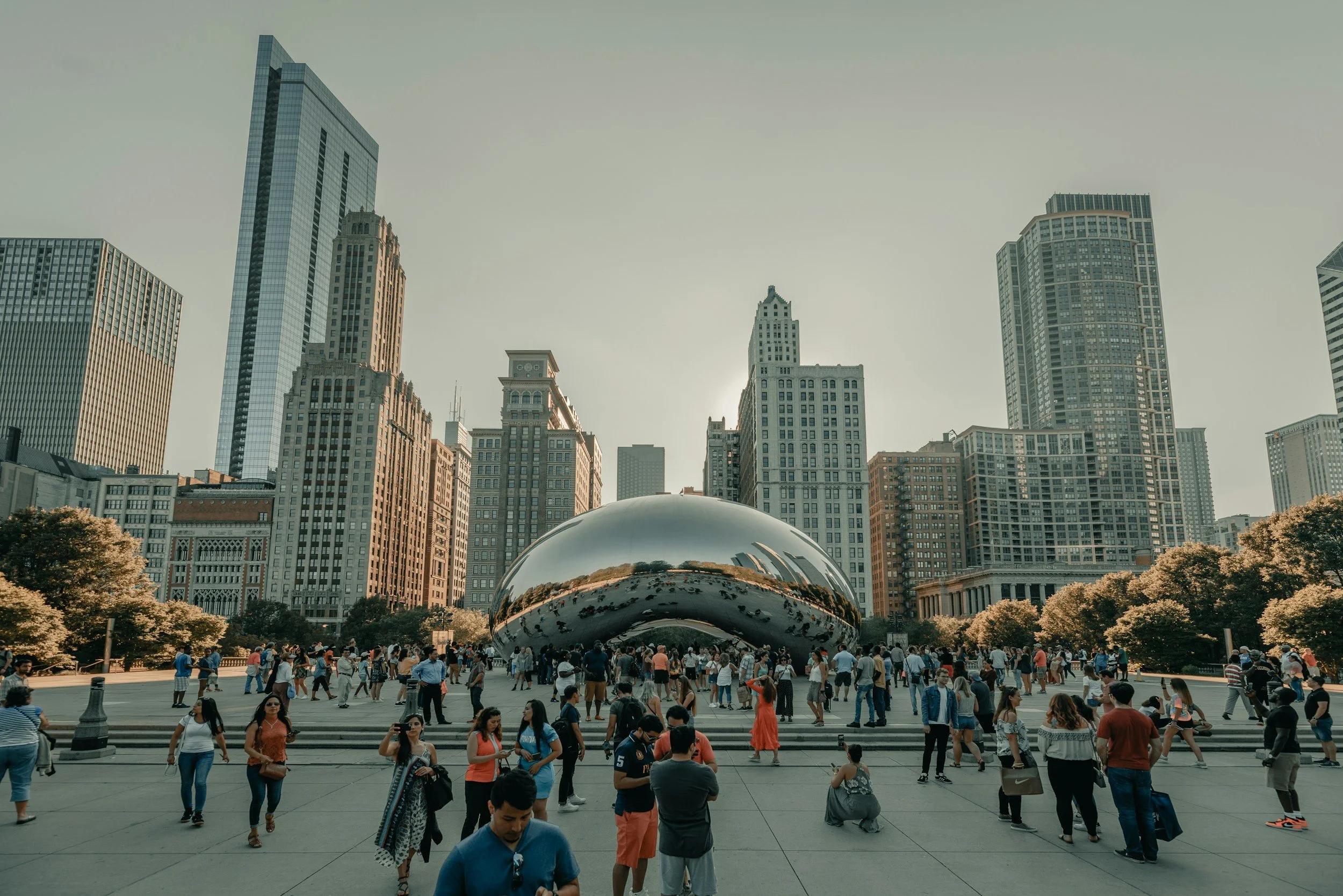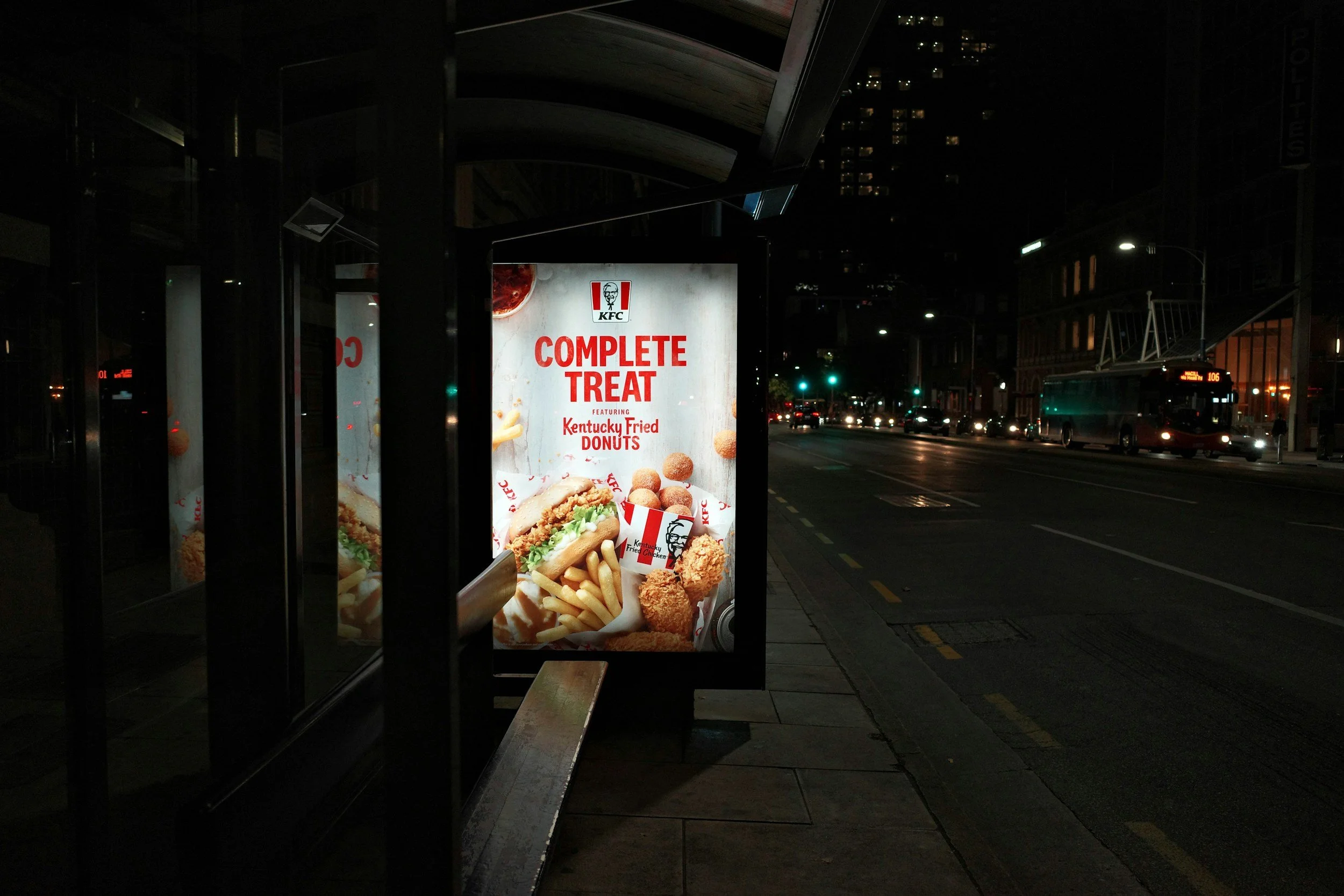Urban Panels: The Street-Level Power of Out-of-Home Advertising
When most people think about out-of-home (OOH) advertising, they picture giant highway billboards, massive digital screens, or the neon spectacle of Times Square. But tucked into the fabric of cities everywhere is a more targeted, often overlooked medium that reaches millions of people every day: urban panels.
Urban panels are the street-level displays—both static and digital—that line sidewalks, transit stops, kiosks, and major retail corridors. Positioned at eye level, they engage pedestrians, cyclists, transit riders, and drivers alike. They’re the posters on a bus shelter, the digital screens outside a grocery store, or the backlit displays near a busy urban intersection. And while they may not command the same visual dominance as a billboard, they deliver something just as powerful: repeated, local, everyday presence.
What Exactly Are Urban Panels?
At their core, urban panels are medium-to-small-format advertising displays, typically around 4 by 6 feet in size. They are designed to reach people as they navigate dense urban environments—whether walking to work, waiting at a bus stop, running errands, or driving through commercial areas. You’ll find them built into bus shelters, mounted on public kiosks, lining pedestrian walkways, or strategically placed outside major retailers, convenience stores, pharmacies, and restaurants.
Some urban panels are static posters, illuminated to stay visible day and night. Others are digital screens that can rotate multiple messages, adapt content based on time of day, or even respond to live triggers like weather or events. What makes them unique is their proximity to everyday life—they are right where people live, shop, commute, and socialize.
Why Urban Panels Matter in the OOH Landscape
Urban panels play an important role in the OOH ecosystem because of their ability to deliver high-frequency exposure. Positioned in busy city zones, they engage people over and over again throughout their daily routines. While a massive billboard may grab attention from afar, an urban panel reinforces messages at the street level, offering consistent visibility where people naturally pause, slow down, or gather.
They are especially valuable near point-of-sale locations. A shopper heading into a grocery store might see an urban panel promoting a snack or beverage. Someone waiting at a bus stop could notice an ad for a new streaming series or an upcoming local event. These moments of connection—right before a decision or action—make urban panels an efficient tool for influencing consumer behavior.
One of their greatest strengths is the ability to target hyperlocal audiences. Brands can tailor campaigns by neighborhood, tapping into the distinct demographics, cultures, or lifestyles of specific city zones. This makes urban panels an ideal choice for local businesses and national brands alike, whether the goal is promoting a retail offer, launching a health campaign, or driving attendance to a nearby concert or event.
Not Just Static: The Rise of Digital Urban Panels
In recent years, cities across the world have been upgrading static urban panels into digital formats, unlocking even more potential for advertisers. With digital panels, campaigns can rotate multiple creatives on the same screen, target messages by time of day (think breakfast deals in the morning, happy hour specials in the evening), and even integrate dynamic content like countdowns, weather updates, or social media feeds.
Programmatic buying has also entered the picture, allowing advertisers to optimize placements and audiences across digital urban networks with greater flexibility. For brands, this means faster campaign adjustments, better audience targeting, and more creative opportunities.
How Urban Panels Fit Into the Bigger Picture
Urban panels are meant to complement other media, such as billboards, wallscapes, and large digital screens, which build broad awareness by reaching massive audiences in one sweeping visual. By contrast, urban panels work at the ground level, reinforcing key messages where people live and act.
For example, a beverage brand might use a nationwide billboard campaign to announce a new product. However, pair it with urban panel placements near urban convenience stores to nudge people toward an in-store purchase. A public health department could launch a citywide wellness campaign on large transit shelters, while using urban panels near clinics and pharmacies to remind residents about specific services.
What Advertisers Should Keep in Mind
Of course, urban panels come with their own set of considerations. The smaller creative space means ads need to be designed for clarity and impact—bold visuals, short copy, and simple calls to action work best. There are also placement and permitting regulations to navigate, as cities typically manage where and how many panels can be installed. And while digital panels allow for more precise impression tracking, static campaigns often rely on modeled audience data.
Still, when thoughtfully integrated into a media plan, urban panels can provide one of the most cost-effective and high-frequency tools in the OOH mix.
How Urban Panels Fit Into the Bigger Picture
Urban panels work at the ground level, reinforcing key messages where people live and act. They are intended to complement billboards, wallscapes, and large digital screens to build broad awareness and reach massive audiences in one sweeping visual.
For example, a beverage brand might use a nationwide billboard campaign to announce a new product, but pair it with urban panel placements near urban convenience stores to nudge people toward an in-store purchase. A public health department could launch a citywide wellness campaign on large transit shelters, using urban panels near clinics and pharmacies to remind residents about specific services.
One of the most powerful advantages of urban panels is the ability to geo-target multicultural audiences. Urban neighborhoods often reflect rich layers of cultural, ethnic, and linguistic diversity. With careful placement, brands and public agencies can tailor messaging to resonate with specific communities, using relevant language, cultural references, or local callouts. Whether it’s a Spanish-language health campaign in a Latino neighborhood, culturally specific creative for Asian American districts, or outreach to African American communities in historically Black neighborhoods, urban panels provide a way to meet people where they are, with messages that feel personal and authentic.
Looking Ahead: The Future of Urban Panels
As cities become smarter and more connected, urban panels are evolving alongside them. More static panels will likely convert to digital. Integration with city data and public services may open up new ways to deliver hyper-relevant, real-time messages. Innovations in interactivity—like touchscreens or QR code engagement—may turn what was once a passive format into an interactive experience.
For brands, the opportunity is clear: urban panels offer a direct, constant, and close-to-the-action connection with urban audiences. They turn everyday city spaces into high-impact communication channels.
Final Thoughts
Urban panels may not always be the loudest voices in the OOH world, but they are among the most effective. Whether static or digital, these street-level displays—especially those outside major retailers and in commercial zones—deliver continuous, local impact that shapes consumer awareness and decisions.
In a media landscape where attention is hard to earn, sometimes the most powerful message is the one you walk past daily.
Connect with us to learn more about Urban Panels in your area:



